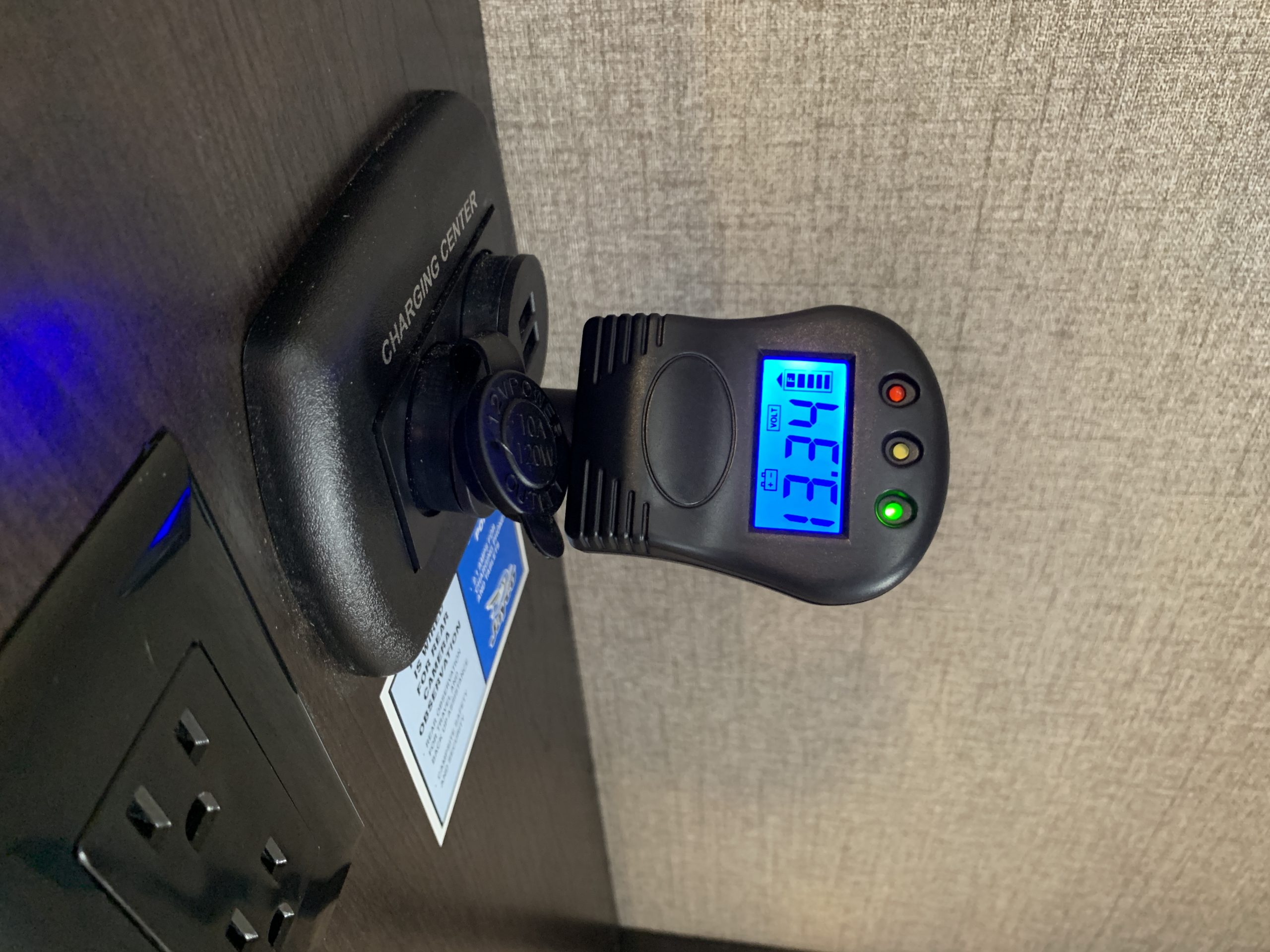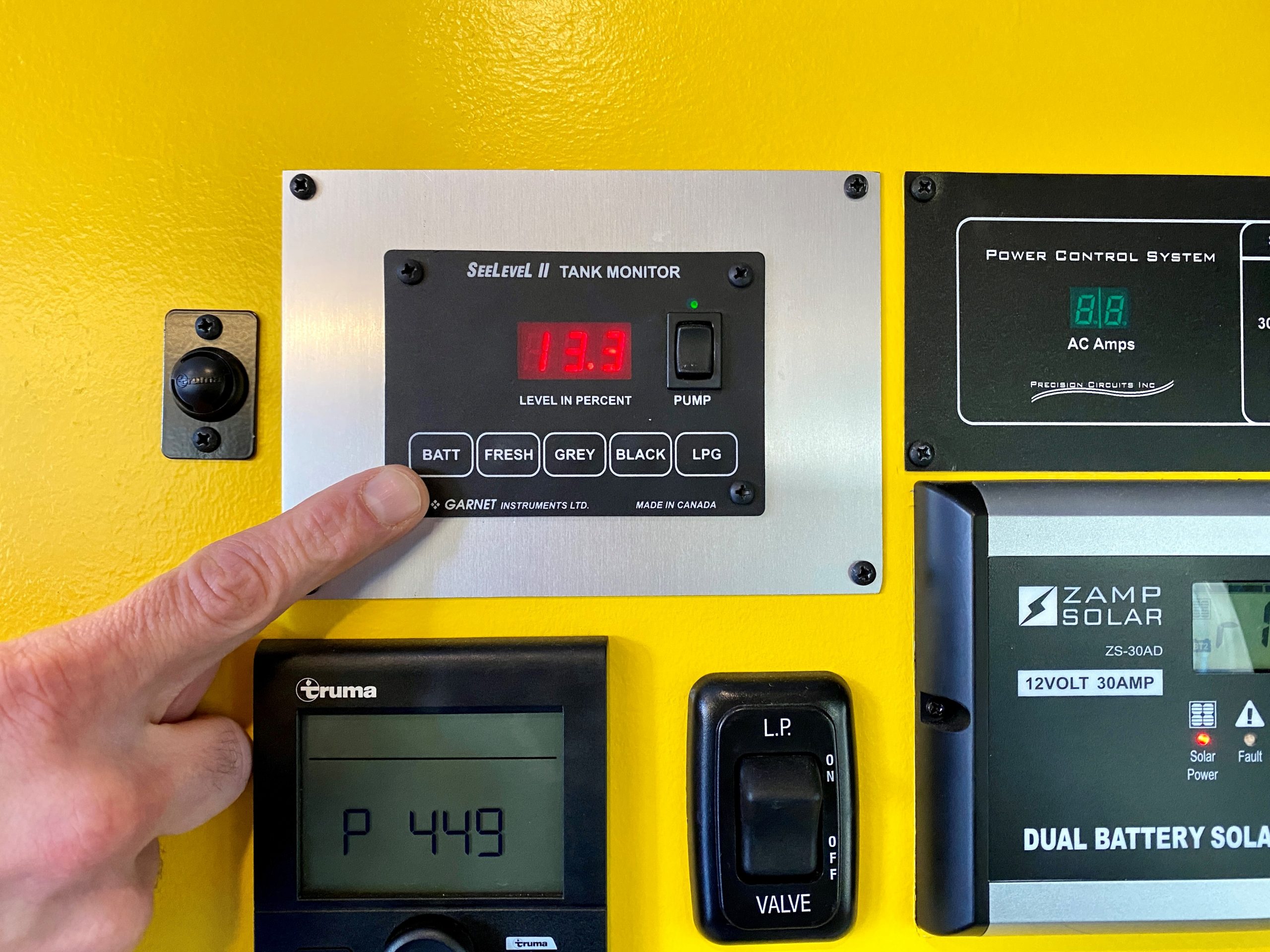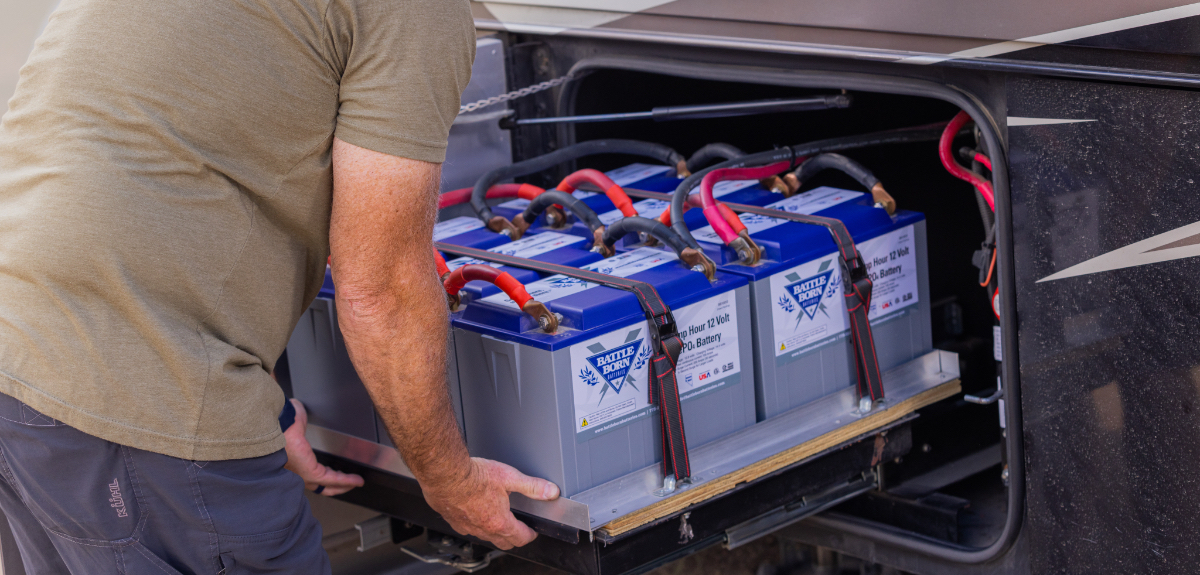Charging Ahead
How to know what your RV battery power capacity is and how much power you have left.
Image Caption:
Your battery bank is the beating heart of your RV’s electrical system. It powers things when you’re not plugged into shorepower, and it stores up energy when you are plugged in. If your RV has solar, those panels are meant to charge your battery. And if your RV has an inverter, it will draw on the battery to generate “household” electric current. Your battery is a resource that makes “off-the-grid” RVing possible, and just like your freshwater supply, it’s a good idea to know exactly how much of it you have on hand.
But measuring RV battery power capacity is more difficult than measuring something like water. After all, you can’t exactly see energy, it has no mass, and it won’t fill up a tank as water does. So, we have to be a little more clever when we want to measure it. Fortunately, there are some basic ways to get a handle on how much of this resource you have left.
Measuring Voltage
You got this! A simple method of estimating RV battery capacity is available to everyone, and it likely won’t require you to modify your rig or get any special equipment. Most RV manufacturers build basic battery voltage monitoring right into their rigs. You’ll typically find a way to monitor battery voltage right on your RV’s control panel.
If your rig doesn’t have a battery monitoring capability on its control panel, don’t worry! Find a 12-volt DC outlet (f you can) that’s working somewhere in your RV (it will look like a cigarette lighter plug), there are simple devices you can plug in, and they’ll show you the voltage. Also, check and see if you have a multimeter available; that way you can check your battery’s voltage right at the terminals. (And if you have a multimeter available, you probably don’t need me to tell you how to use it!)

Plug-in voltage testers that work on a cigarette lighter are inexpensive and easy to use (image James Adinaro).
It may surprise you to learn that your 12-volt battery doesn’t necessarily put out 12 volts. This is true for traditional lead-acid batteries, AGM batteries, and even newer lithium batteries. The voltage of the battery starts off higher and decreases as the battery becomes discharged. We can use this decrease in voltage to get a handle on how much charge is left in the battery. It’s not measuring the charge directly—it’s measuring an indicator of the charge.
But here’s the catch: Voltage does decrease with discharging for all batteries. But the way it does depends on what type of battery (or battery bank) you have. We’re going to cover lead acid (this includes flooded cell and AGM) batteries, and lithium batteries (Lithium Iron Phosphate or LiFePO4) here, since those are the most common. If you don’t know what kind of battery your RV has, you can assume you have a lead-acid battery, since you would remember paying for a lithium upgrade.
Measuring Lead-Acid Batteries
Let’s start off with lead-acid batteries. In a happy coincidence of electricity and chemistry, the voltage of a lead-acid battery decreases consistently and predictably as it discharges. That makes it relatively easy to read the voltage and get an approximation of capacity from a state-of-charge chart. I know many people who carry little copies of these charts in their RV. As an example, if you check the RV’s battery voltage and it checks in at 12.1 volts, your chart will tell you the batteries are about half full.
I say this is an “approximate” RV battery capacity because we’re not measuring charge directly—we’re measuring voltage. It’s kind of like measuring your vehicle’s speed by counting “1 Mississippi, 2 Mississippi” while you roll by mile markers. It’s not exact. But since we’re camping and not in a laboratory, it’s good enough.
Measuring Lithium Batteries
This method doesn’t work quite as well with lithium batteries. This is because the voltage of a lithium battery doesn’t change as much as you discharge it. The voltage stays relatively constant until the very end. The difference between 70-percent full and 40-percent full can be as small as 0.1 volts, which could approach the accuracy limitations of your voltage meter.
Nevertheless, charts for lithium battery voltage do exist. And if that’s all you’ve got, it’s better than nothing, and should still suffice to keep you happily camping.
The Next Level: The Shunt
It’s possible to get more accurate readings for battery capacity, but this requires more than just checking voltage. It requires some additional equipment to do this, so you’re probably looking at an upgrade to get this capability. These pieces of equipment are called “Shunt-Based battery monitors,” and they’re not usually included in a factory RV.
I’ve actually installed one of these in every RV we’ve had. I didn’t do it because the voltage method to estimate the state of charge wasn’t working (it was). I did it because I just wanted to know more about how my RV’s batteries were holding up.
Shunt-based battery monitors are available from various sources like Trimetric, Victron, and Balmar, and they all work similarly. You install a shunt on the negative lead into your battery bank. The shunt acts as a kind of “flow meter” and measures the current flowing from your battery. The shunt is connected to a monitor panel of some kind, where you read the state of charge. This State of Charge (SOC) is the “gas gauge” type of output you probably thought was missing.
Shunts are a fairly common piece of technology. So, it’s in the monitor panels where each manufacturer builds in their proprietary “smarts” to convert the data from the shunt into useful information for you, the end-user. I’ve used several of them, and they typically require you to input some features about your battery so that they can figure out how much charge you have remaining. The programming isn’t difficult, but you will have to follow the instructions closely.

This panel shows displays the voltage from a lithium iron phosphate battery that has a higher resting voltage (image James Adinaro)
The payoff for the extra equipment and programming is a much more accurate readout of battery capacity. Whereas with simple voltage readings, you’ll know the batteries are 60 percent full(ish), with a shunt-based battery monitor installed, you’ll know if they’re 63 percent full or 57 percent full. Depending on the model you have installed, you might also get information on how long the batteries would last under current conditions, or even some indication of how “healthy” the batteries are.
Shunt-based monitors also work better than standard voltage readings for lithium batteries. By measuring the electric flow through the battery, they’re able to overcome the limitations presented by the relatively constant voltages.
There’s a LOT more you can learn about batteries. For example, we haven’t even touched on how a battery’s capacity decreases over time. That can be a big deal, and it’s one of the ways you might determine when it’s time to replace the batteries. And we haven’t gotten into more advanced topics like “voltage sag” either.
But the good news is that most of the time, those things don’t matter too much and all you really need to know is how much battery your RV has left in the proverbial tank. And answering that question is something you can do with the tools already built into your RV.





